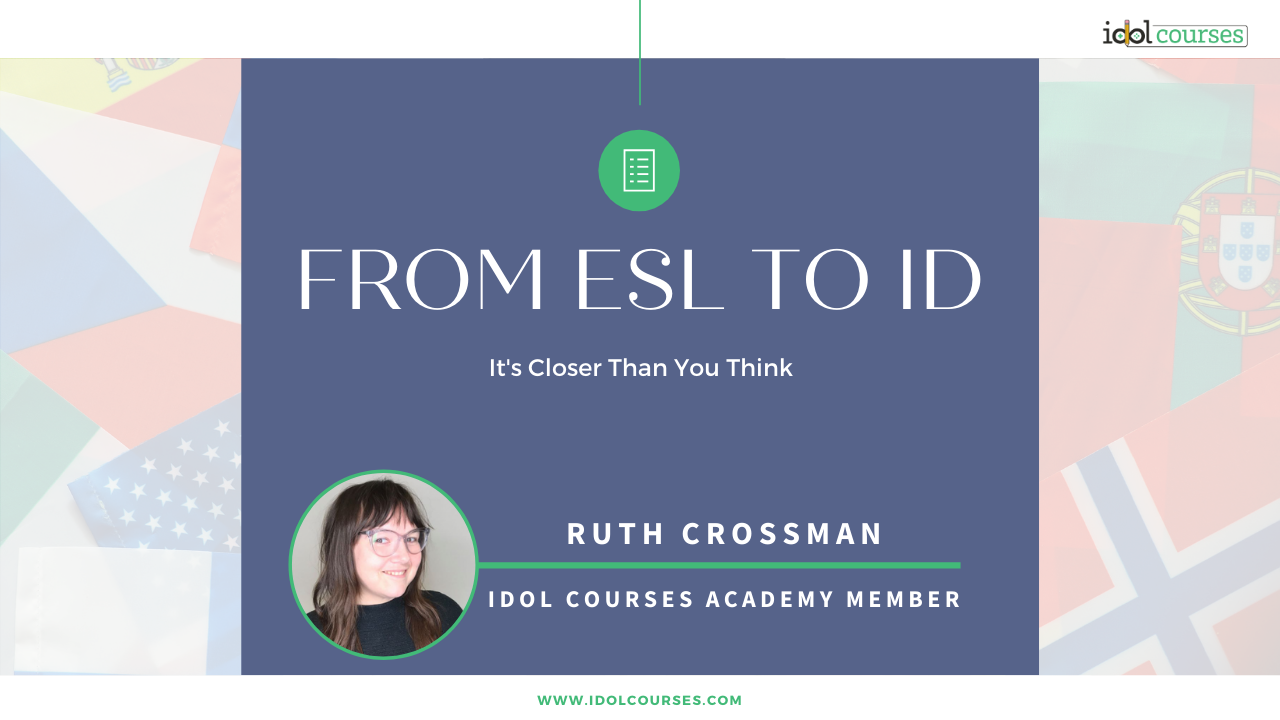ESL to Instructional Design: It’s Closer Than You Think
Oct 22, 2020

We Have the Technology Skills
Setting up assignments and grading papers online felt like more of a chore than anything else back when I was teaching. But when I redid my resume and began interviewing for ID jobs, I quickly realized that knowing my way around Canvas was a huge plus. According to Instructional Designer Sharon Tjaden-Glass, familiarity with educational technology is one of the key competencies shared by ESL professionals and Instructional Designers. Chances are we have already taught hybrid classes and worked with Learning Management Systems, especially if we come out of higher ed.

We’re Learner-Centric Designers
How many times have you taken a dry grammar point or boring textbook assignment and turned it into something fun for your students? In the ESL world, this is known as communicative teaching. In ID it’s known as Learner-Centered Design, and it’s a sought-after skill. Taking a topic that was less-than-interesting and making it engaging by adding elements like gamification or storytelling will serve you well when you start to creating e-Learning resources.

We Can Talk to Everyone
When I first started planning my career pivot, I was mainly focused on showcasing my hard skills. But there was another aspect of succeeding in ID I didn’t know about yet: talking to stakeholders and creating relationships with Subject Matter Experts. One of the key skills we develop in EFL is talking to different audiences and breaking down complicated ideas in simple terms, and this is a critical soft skill in the world of corporate ID. Heather Cardes, a former ESL teacher who now works as an ID consultant, explained to me how this skill helped her win over the SMEs at her job. Instead of using complicated educational terms to explain what she wanted to do, she broke it down for them using ideas she knew they would already understand. As a result, they were much more willing to help with her course. And speaking of working with Subject Matter Experts...

We’re Great at Facilitating
Excellent communication skills. Ability to manage relationships and influence stakeholders. These are common soft skills you will see listed for Instructional Designer roles. Knowing how to facilitate groups and manage feedback from multiple sources is critical in this industry. Luckily for us, it’s also an area we tend to excel in. How many times have you mediated lively class discussions? Negotiated conversations between learners from different cultures? If you are anything like me, the soft skills you picked up facilitating groups of adult learners are going to serve you well when you are working with teams of collaborators or trying to win over a tough Subject Matter Expert.
So if you are a TESOLer considering a career shift, I hope this article gives you a confidence boost. Impostor Syndrome is a serious problem, but remembering the skills you already have can help you keep your head up.

Written by: Ruth Crossman
Ruth is an instructional designer and former ESL teacher. She is passionate about creating dynamic e-learning courses and specializes in scenario-driven instruction and gamification. Creativity is a central part of her identity and she spends her time writing, playing guitar, and designing new culinary creations when she is not working. If you want to learn more, connect with her on LinkedIn.
Stay connected with news and updates!
Join our mailing list to receive the latest news and updates from our team.
Don't worry, your information will not be shared.
We hate SPAM. We will never sell your information, for any reason.


